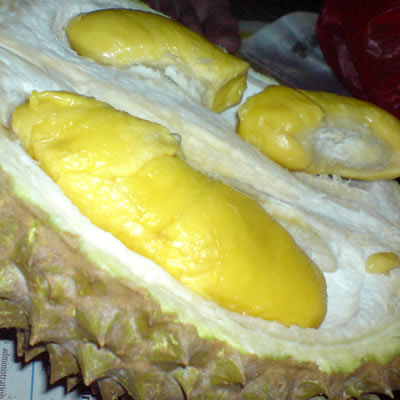BEYOND THE FOOD
GREAT CONVERSATION MAKES GREAT MEALS BETTER
Bring to your table not only exquisite, ethnic cuisine but also the cultural knowledge and insight to share with and impress your friends!

DURIAN
Widely known in Southeast Asia as the “king of fruits”, the durian is distinctive for its unique odour and its thorn-covered husk. Its shape ranges from oblong to round, the colour of its husk green to brown, and its flesh pale yellow to red, depending on the species.
The edible flesh emits a distinctive odour, strong and penetrating even when the husk is intact. Some people regard the durian as fragrant; while others may find the aroma offensive. The smell evokes reactions from deep appreciation to intense disgust, and has been described variously as almonds, rotten onions, turpentine and even smelly gym socks. The odour has led to the fruit’s banishment from most hotels and public transportation in Southeast Asia.
The durian, native to Brunei, Indonesia and Malaysia is a seasonal fruit, unlike some other non-seasonal tropical fruits such as the papaya, which are available throughout the year. In Peninsular Malaysia and Singapore, the durian season is typically from June to August.
Durian fruit is used to flavour a wide variety of sweet edibles such as traditional Malay candy, ice kacang, dodol, rose biscuits, and, with a touch of modern innovation, ice cream, mooncakes, and cappuccino.
Tempoyak is a popular Malay delicacy, which is durian extract, preserved and kept in a jar. It is commonly eaten with chillis and other dishes.